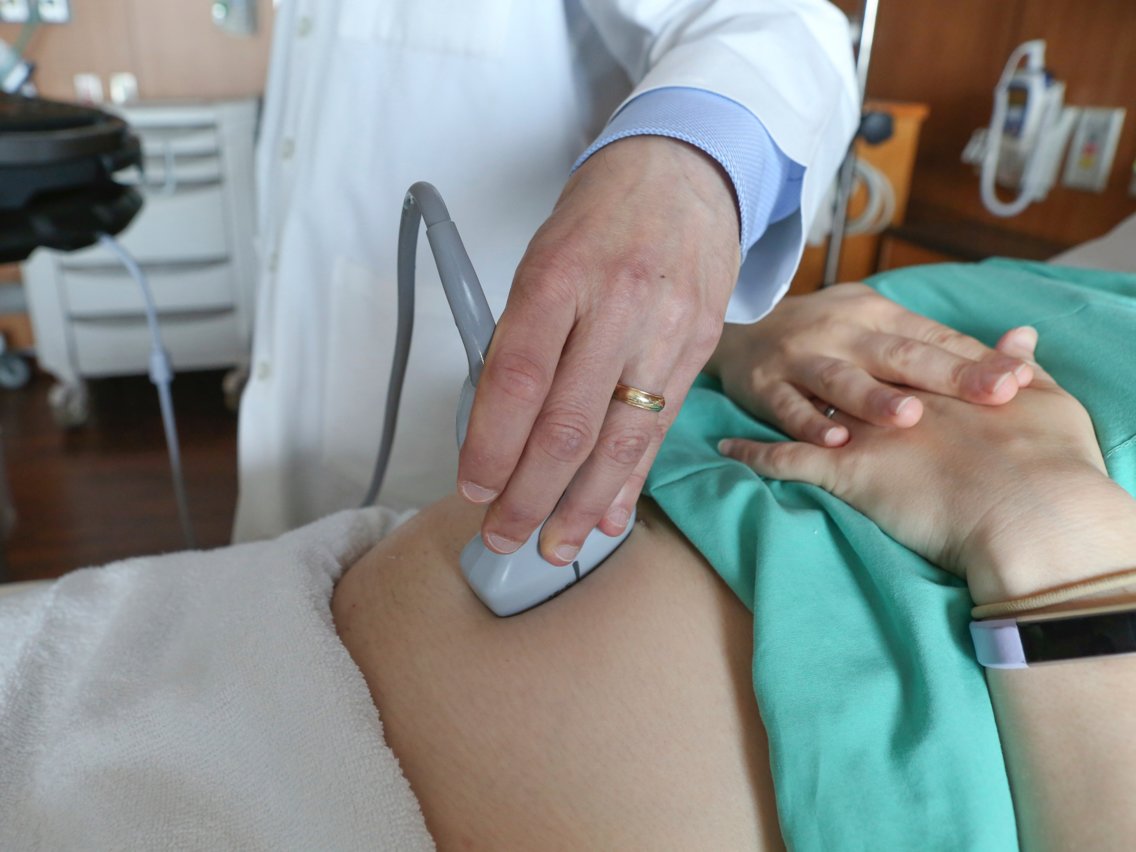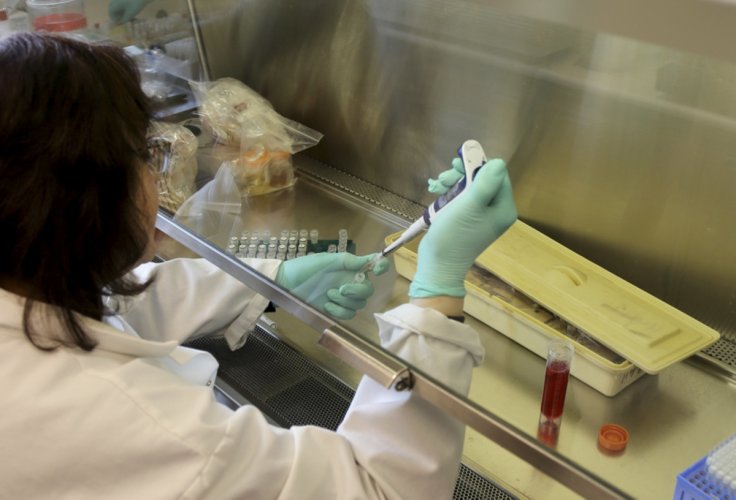- Business Insider asked two high-risk OB-GYNs to debunk 25 of the most common pregnancy myths.
- They explain that pregnant women don’t need to eat twice as much, there is no safe amount of alcohol to drink during pregnancy or while you’re breastfeeding, and cocoa butter does not prevent stretch marks.
- They further explain that there is currently no food, supplement, or physical activity that can help induce labor.
Myth 1: Pregnant women need to eat twice as much.
Dr. Laura Riley: Oh, this is my favorite. “Pregnant women need to eat twice as much.” Absolute myth. Don’t do it. You really actually only need about 200 extra calories a day over a normal American diet. And that’s assuming that you’re starting pregnancy at a normal weight.
“Sex during pregnancy hurts the baby.” Well…
Dr. Dena Goffman: “Cocoa butter prevents stretch marks.” This is a myth.
Riley: I’m Laura Riley. I’m a high-risk OB at New York-Presbyterian Hospital/Weill Cornell.
Goffman: I’m Dena Goffman. I’m a high-risk OB at New York-Presbyterian/Columbia.
This is so exciting, wondering what’s gonna come next.
Riley: I know, I know.
Myth 2: It’s OK to drink a glass of wine when you’re pregnant.
Goffman: Oh, my favorite. “It’s OK to drink a glass of wine when you’re pregnant.” We know that the recommendation in pregnancy is that you really should not consume any alcohol. Unfortunately, there is no safe amount of alcohol nor a safe time in pregnancy when we can be sure that alcohol won’t affect a developing fetus.
Riley: Also, I think it’s important to add that we don’t think it’s safe to drink while you’re breastfeeding, either, because the alcohol does get into breast milk. And as Dr. Goffman said, we don’t know what the safe amount is, and that safe amount may actually change for different women.
Myth 3: Your belly reveals the baby’s gender.
Goffman: “Your belly reveals the baby’s gender.” We certainly hear patients coming in to see us and having heard or having family members say that they can tell whether you’re having a boy or a girl based on how the woman’s belly looks. And we know that there is absolutely no evidence that the shape of your belly can tell us this type of information.
Riley: The other myth that goes along with gender I think is the heart rate is high or low. My patients always say that, you know, they come in, oh, it’s 160, it must be girl. Like, no. If it’s 160, it means the kid’s moving a lot, and if it’s sleeping it’s going to be 120. So it doesn’t tell you whether it’s a girl or boy.
Myth 4: Cocoa butter prevents stretch marks.
Goffman: “Cocoa butter prevents stretch marks.” This is a myth. While cocoa butter is something that many patients like to use, we don’t have any evidence that cocoa butter or anything else that we can recommend will prevent stretch marks.
Riley: It’s probably genetic, and, essentially, if you gain too much weight in one spot, i.e. your pregnancy gets really big, you’re more likely to get stretch marks, unfortunately. But it’s not worth spending a ton of money on expensive creams, because it’s not gonna work. That was cheery.
Myth 5: You can give a cold to your developing baby.
Riley: “You can give a cold to your developing baby.” This is a complete myth. Your baby is not gonna get the cold. Although your baby can get sick if you get something like the flu, which is why we tell you to get a flu shot, to prevent your baby from getting really sick. There are some illnesses you can transfer to your baby, but probably not a cold. I think people get the cold and the flu confused, which is unfortunate because the flu can make you really sick in pregnancy.
Myth 6: What you eat during pregnancy can influence the baby’s palate.
Goffman: “What you eat during pregnancy can influence the baby’s palate.”
Riley: I don’t think there is a shred of evidence to support that. I think that what you eat during pregnancy is important because it does sort of, you know, set your baby off to a good start in terms of its overall nutrition and good health. But it’s probably not gonna change the baby’s palate.
Goffman: We always talk about nutrition and food choices and healthy weight gain, which really can have long-term impact on your baby’s development, but not specifically the palate or what they have a taste for.
Myth 7: Pregnant women shouldn’t drink coffee.
Riley: “Pregnant women shouldn’t drink coffee.” That’s a myth. You can drink coffee. This is one where moderation is the most important thing. In the first trimester, having excessive amounts of coffee have been associated with a higher risk of miscarriage. Once that first trimester is over, should you go crazy with the coffee? Probably not. But it’s not gonna harm anything.
Myth 8: Pregnant women shouldn’t eat hot dogs.
Goffman: “Pregnant women shouldn’t eat hot dogs.” So, this is a myth. I think the concern with hot dogs are a few. You want to make sure that they are well cooked to avoid infection risk. And there used to be a fair amount of conversation about the amount of nitrites in hot dogs, but I think the evidence suggests that unless you’re eating really excessive amounts of hot dogs, that it’s probably OK to enjoy one. I think there are probably things better than hot dogs to eat, nutritionally, but I think if people enjoy one once in a while, I don’t have a problem with it.
Riley: You’re way nicer than I am. I’m not sure why anybody’s eating hot dogs, frankly, but, you know, you can have one in pregnancy, but I think it’s really important to make sure that it’s cooked, because the concern about listeria is a real concern. So, that includes the hot dogs, the unpasteurized cheeses, the deli meats. All of those things are things that we worry about. So I think, you know. Yeah, it’s a myth that you can’t eat hot dogs, but you should be certain that it’s cooked well.
Myth 9: Pregnant women shouldn’t eat smoked salmon.
Riley: “Pregnant women shouldn’t eat smoked salmon.” That’s a myth. You can eat smoked salmon if you like it. I’m not a lover of salmon, so.
Goffman: I love it. You can eat smoked salmon. This gets into concerns around fish consumption in pregnancy, which is a huge topic. And we talk to our patients about the risk of various types of fish. So, we want to avoid fish with high mercury content. So typically that would be avoiding excessive tuna, choosing chunk-light, canned tuna, and also limiting the number of cans of tuna in a week. There is also some concern about some of these oily fish, I guess, about the potential for toxins. And so I would say salmon in general may fall into that category, but smoked salmon I think is safe for pregnant women to eat.
Riley: The whole fish story is a little blown out of proportion. And I think people get really crazy about this whole mercury thing. I would say it’s important to also recognize, though, that fish has great nutritional value to it that pregnant women and babies need and want. So it is unfortunate that somehow the fish story has resulted in people thinking, “I can’t have any fish.” It’s really the large steak fishes where you’re worried about the mercury. But then, don’t forget that something like salmon is gonna give you the DHEAS, which you want.
Myth 10: Pregnant women shouldn’t pet cats.
Goffman: “Pregnant women shouldn’t pet cats.” This is a myth. This would be terrible if all pregnant women in the world couldn’t pet their pets, their cats. There is a concern with pregnant women caring for cats in terms of the litter box, and really the risk is toxoplasmosis. And the risk of exposure isn’t with interacting with your cat, but with changing a dirty litter box.
Riley: It is actually fairly rare in the US for women to come into contact with toxoplasmosis. The more important thing about sort of the cat stories, everyone worries about the cat and the kitty litter; the most common exposure that women get to toxoplasmosis is actually not the cat or the liter even. It’s not washing your garden vegetables, because it’s the cat that has the toxin that poops in your garden and then you pick that up and eat it because you don’t wash it or whatever. So, gardening without gloves are things that we tell pregnant women to avoid because of that particular infection. The cat’s got a bad rap, unfortunately.
Myth 11: Pregnant women shouldn’t fly.
Riley: “Pregnant women shouldn’t fly.” Total myth, get on the plane, have a good time. That said, there are a few things to think about when flying. I think one of the major issues is that pregnant women are at increased risk for getting a blood clot either in their leg or their lung. When you fly, the air is dry. You’re also more likely just to be sitting for a prolonged period of time. And that just further increases your risk for getting a blood clot. So I always tell pregnant women, be happy, go ahead. Go on those trips. But you should hydrate before you go. You should wear support hose or at least, like, you know, running tights or something that gives you a little bit of support in your legs. You should get up and walk around every hour or so. People worry about the air pressure, which makes no sense because it’s a pressurized cabin. That doesn’t do anything, you’re not gonna break your water. And they also worry about going through the screener, right? Everybody’s worried about the radiation going through the screener, but in fact the radiation exposure is actually higher when you’re in the sky in the plane than it is when you’re walking quickly through the security.
Myth 12: Exercise during pregnancy can strangle the baby.
Goffman: “Exercise during pregnancy can strangle the baby.” This is a myth. Exercise is actually strongly recommended during pregnancy. All of our professional organizations, all of us as providers talk to patients about maintaining physical activity, maintaining exercise throughout the pregnancy, really unless there’s a medical situation that comes up that changes those recommendations. So, exercise is not dangerous. And in fact, the opposite. It’s really important.
Riley: I think also this whole strangling thing comes from this crazy nonsense that if you get yourself into certain yoga positions, your baby can strangle itself. You don’t have any control over the position your baby gets into. The baby is floating in a pool of water. And it doesn’t matter whether you’re doing a headstand or you’re just, like, chilling.
Myth 13: Sex during pregnancy hurts the baby.
Riley: “Sex during pregnancy hurts the baby.” Well, that’s a big myth. And it also helps to understand sort of the anatomy a little bit. I think this is where patients get a little bit confused. The baby is floating inside a pool of water, a big balloon bag. And that balloon bag is surrounded by thick muscle, which is the uterus, surrounds the entire bag and has, actually, a thicker portion at the bottom. So there’s just no way that sex is gonna get even near the baby.
Myth 14: Dyeing your hair is harmful for the baby.
Goffman: “Dyeing your hair is harmful for the baby.” This is another big myth. And we get phone calls about it. Lots of questions. There is no evidence, and again, we keep coming back to evidence because that’s what we look to as your physicians. And there really is no evidence out there that the things that we use for hair-dyeing reach the baby or have the potential to cause harm.
Riley: The other thing about the hair dye, frankly, I tell people, if it’s gonna make you feel better, that’s really important because, for a lot of us, how we look and how we present ourselves really has a lot to do with our psychological state. And you want that to be as healthy as possible during pregnancy.
Myth 15: There are simple tricks to overcome morning sickness.
Riley: “There are simple tricks to overcome morning sickness.” I think that that’s a myth in the sense that none of those things were probably simple. But I think there are ways to sort of decrease the painfulness of morning sickness. The first thing is that the morning sickness can last all day, so the whole “morning” thing is a myth in and of itself.
But that said, some of the things that you can do to help it: Try and start the day with something really simple, like soda crackers, the minute you get out of bed. Saltines, something really bland. Stay away from the smells, the smells are going to make you sicker.
I think the biggest thing that I’ve learned over the course of my career, and had personal involvement with this one, is we tell people to stay hydrated and so they go after the water bottle. And stay away from the water. The water makes you sick, I don’t understand it, but it makes you sick. So, what I tell patients is put everything over crushed ice. That way you’ll get the water but you’re not actually drinking it and gulping air as you’re drinking out of a water bottle.
The things that I would put over ice, I would say lemonade, and ginger ale, letting some of the fizz out, will help as well. Lemon Popsicles, lemon slush, lemon Italian ice. The reason I say lemon is because lemon helps cut the nausea as well. I think the other critical thing for morning sickness is it’s important to go out every day. I think sometimes what happens is you feel a little bit nauseous, then you feel worse, then you start to feel depressed, and then you can’t get yourself moving because you’re tired. And that’s the worst thing you can do is to sort of give in to it. I think it’s important to get outside, walk around, even if it’s just down the block and back.
Myth 16: C-sections are always necessary for breech births.
Goffman: “C-sections are always necessary for breech births.” So, this is a myth, although I think most of us think C-sections are the most common and the safest way to deliver a singleton. So, a single baby in labor, especially at term. So there are certainly situations that we need to be able to individualize for. Often we’ll talk to patients with twins. If the second twin is breech, that may be a great option for them. And I think there are rare situations where a woman comes in in labor where we may recommend and or support a vaginal breech delivery for a singleton.
Riley: I think in order to support a vaginal breech delivery, you need to have a provider who has experience doing that. And, you know, the reality is that in the US, the number of providers that are able to do those safely is definitely diminishing, almost to none. I think the other option though, which I think we should put out there on the table, is a version which is if you know the baby is breech and you’re at term, is coming in for a procedure where we, under ultrasound guidance, turn the baby to head-down.
Myth 17: If you sit all day, you’ll have a breech baby.
Riley: “If you sit all day, you’ll have a breech baby.” Total myth. If you sit all day, you’ll gain a lot of weight and you’ll have back pain, but your baby will do whatever your baby is gonna do. Most babies are not breech at full term. So, only about, is it like 3% of babies are gonna be breech at full term. Those babies are gonna turn multiple times until they get to around 36 or 37 weeks. And so it has nothing to do with whether you’re running a marathon or you’re sitting on your bottom.
Myth 18: Pregnant women should sleep on their left side.
Goffman: “Pregnant women should sleep on their left side.” I think pregnant women should sleep how they’re comfortable, although we know that women, as they get more pregnant into the second and certainly in the third trimester, may not be able to sleep flat on their back. And that’s because as the pregnancy grows, the fetus grows, the uterus grows, the weight that the uterus will put on your blood vessels and some other structures may make that really uncomfortable and not ideal for the baby. So women can sleep on their left side, they can sleep on their right side, they can sleep on their back, tilted a little bit. But we usually aren’t so strict as to say left side only.
Riley: I think people worry that, oh, my gosh, I woke up and I’m flat on my back, did I kill my baby? You didn’t kill your baby. If you sleep flat on your back, as Dr. Goffman said, the structure we’re most worried about is the inferior vena cava, so it’s this big blood vessel bringing blood back up to your heart and your head. And most people are gonna get really nauseous, right? And light-headed and feel weird. And so you’ll naturally turn, so you don’t have to wake yourself up to do it.
Myth 19: Your hair and skin look better when you’re pregnant.
Riley: “Your hair and skin look better when you’re pregnant.” Ha, I wish. Your hair might look better, I guess? Your skin probably won’t necessarily look better. Some women say they glow. I think that they’re…[laughs] they’re dreaming. Unfortunately, the high progesterone levels that you get when you’re pregnant to support the pregnancy actually can really bring out acne that you haven’t seen since you were 13 years old, and all the expensive creams in the world are not gonna fix that. So I wouldn’t suggest that you spend your money on it.
Myth 20: Pregnant women get flexible.
Goffman: “Pregnant women get flexible.” You know, we recognize there are lots of changes going on in women’s bodies when they’re pregnant, but I wouldn’t say that getting flexible is one of them. There are certain things that happen in terms of your posture, how you stand, and definitely some relaxation of different parts of your body to prepare your pelvis to be able to have a vaginal birth. But I don’t think that sort of traditional flexibility is what we typically see.
Myth 21: Eating spicy foods will induce labor.
Goffman: “Eating spicy foods will induce labor.”
Riley: Ha!
Goffman: So, if this were true, that would be wonderful because we could help women induce labor when we wanted to. Unfortunately, we haven’t been able to come up with any particular food or physical activity or drink or supplement that actually can induce labor. We have medications to use to induce labor, but as far as we’ve been able to tell, there is no evidence that any of those things that women may want to try actually will be effective.
Riley: I think people are just looking for something to get out of Dodge at 40 weeks, which I can totally relate to.
Goffman: Yeah. [laughing] It’s not going to hurt.
Riley: It’s probably not going to hurt. The spicy food probably won’t hurt. You can do whatever you want, but your baby’s in charge. Just remember that.
Myth 22: Yoga can induce labor.
Goffman: “Yoga can induce labor.” We think there are a lot of benefits to potentially doing yoga and participating in pregnancy, but inducing labor isn’t one of them. Certainly more women are using yoga, which may help with relaxation, may help with stress relief, may help with stretching. And so I think there are a lot of reasons why yoga may be a great thing to participate in, but there’s no evidence that it induces labor.
Riley: If only.
Myth 23: Yoga makes labor smoother.
Riley: “Yoga makes labor smoother.” I think, overall, exercise probably gives you a better labor in the sense that it is usually more efficient. But yoga itself, not necessarily making it smoother.
Goffman: There are some things about yoga that are similar to other labor preparation or childbirth preparation things, right? Breathing, mindfulness, I think are similar to some childbirth preparation things. So I think, in that sense, some of those things may help you to be more centered, be able to focus, be able to use some of those strategies to help, but certainly not make labor itself smoother.
Myth 24: Natural births are better.
Goffman: “Natural births are better.” So, this is a myth. There are certainly women who spend time thinking about what they’d like their birth experience to be like. And I think for some women, natural birth, and the way we think about that is usually birth without pain medication, and for some women, this may be a wonderful experience, but we all know that we need to individualize the care for our patients. And for many women, a natural birth may not be better. There may be real medical benefits, depending on the situation and underlying condition, to having pain medication, to having an epidural.
Riley: I’m a huge fan of natural childbirth, I have to say, but I do think that it takes some preparation, and I think it takes mental preparation, and I think that it’s not better or worse. I also think there’s another myth associated with natural childbirth, which is that if you’re induced you have to have anesthesia because the pain is worse. The pain is bad whether we give you the contractions or your kid gives you the contractions or it happens naturally, whatever. It’s painful. And some people can cope better because they’ve practiced mindfulness or hypnobirthing or whatever. And then sometimes people can just cope better because it’s faster. But again, I think it’s all about everybody can make their own birth choices.
Myth 25: There are ways to predict your exact due date.
Riley: I love this one. “There are ways to predict your exact due date.” When we give you your due date, it’s plus or minus two weeks. And the reason is because your kid’s in charge of when you go into labor. We are not. Though, I have to say, are much more precise in knowing what your dates are than we used to be because we use ultrasound, early, early ultrasounds, so much more frequently. Obviously, there are those people who have done IVF, and they know even more. But again, even if you know when it all started, you do not know when it will all end. Because the person who knows that is your baby and we can’t at the moment talk to that person.
Source:insider.com









